|
Have a safe day!
Tuesday, March 11
11 a.m.
Academic Lecture Series - One West
Speaker: Albert Stebbins, Fermilab
Title: The Cosmic Microwave Background: How It Works
3:30 p.m.
DIRECTOR'S COFFEE BREAK - 2nd Flr X-Over
THERE WILL BE NO ACCELERATOR PHYSICS AND TECHNOLOGY
SEMINAR THIS WEEK
Wednesday, March 12
3:30 p.m.
DIRECTOR'S COFFEE BREAK - 2nd Flr X-Over
THERE WILL BE NO FERMILAB COLLOQUIUM THIS WEEK
Click here for NALCAL,
a weekly calendar with links to additional information.
Ongoing and upcoming conferences at Fermilab
|
|
Tuesday, March 11
- Breakfast: All-American breakfast
- Breakfast: bacon, egg and cheese bagel
- Grilled reuben sandwich
- Smart cuisine: portobello and peppers over soft polenta
- Beef stroganoff
- Grilled-chicken Caesar jazz salad wrap
- Pork carnitas soft tacos
- Split pea with ham soup
- Chef's choice soup
- Assorted pizza by the slice
Wilson Hall Cafe menu
|
|
Wednesday, March 12
Lunch
- Spicy pork diablo
- Sweet potato mash
- Roasted broccoli
- Flourless chocolate ancho cake
Friday, March 14
Dinner
Closed
Chez Leon menu
Call x3524 to make your reservation.
|
|
"Particle Fever" hits Naperville and Chicago theaters Friday
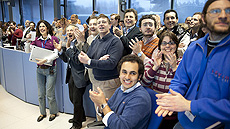 |
The new documentary "Particle Fever" follows scientists involved in the search for the Higgs boson at the Large Hadron Collider. Photo courtesy of the ATLAS experiment
|
A new documentary on LHC scientists' years-long search for the Higgs boson, "Particle Fever" opens Friday, March 14, at the AMC Showplace Naperville 16 and the Music Box Theatre in Chicago.
On Friday and Saturday evening and Sunday afternoon, audience members at the AMC in Naperville will be treated to a special Q&A with scientists on LHC experiments.
Advance tickets are now available online at the AMC and Music Box Theatre websites.
Stay tuned for more details.
|
Greg Bock receives 2014 Watkins Physics Prize
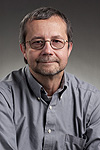 |
|
Greg Bock
|
Associate Laboratory Director for Particle Physics Greg Bock is the recipient of this year's Watkins Physics Prize.
He received the award, granted by the Watkins Foundation, for his pursuit of studying the origins of CP violation in the neutral kaon system, culminating in the final study with the KTeV experiment.
The Watkins Foundation supports of the Watkins Visiting Professorship at Wichita State University. The departments of biological sciences, chemistry, geology and physics share the professorship.
|
Network connections: universities compute for particle physics
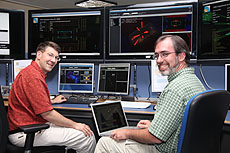 |
Notre Dame University has an active high-energy physics computing program and is one of a number of schools contributing to computing for the CMS experiment. Pictured here are professors Mike Hildreth (left) and Kevin Lannon, who is also computing liaison for the US CMS collaboration board. Photo courtesy of Kevin Lannon, Notre Dame University
|
Building on Fermilab Today's University Profiles, the Computing Sector followed up with several 2012 participants to inquire about the roles their computing departments play in particle physics research programs. We questioned randomly selected universities for two articles, and this feature focuses on the seven responses to our second set of questions.
The first article concentrated on the value of collaboration, demonstrated by the contribution of software development or local computing resources from different universities' computing departments to various high-energy physics research groups. Unsurprisingly, this remains a theme here: Six of the universities are currently Open Science Grid members; six are CMS or ATLAS Tier-3 or Tier-2 centers, with the seventh almost finished installing a Tier-3 center; and all have contributed software to experiments.
Effective collaboration also encompasses research to improve resources. This can be incremental, enhancing precision or efficiency, or revolutionary, with novel approaches stemming from R&D efforts that create new experiment and analysis opportunities. The following are selected examples of R&D work from the universities' responses.
Several are investigating future processing, infrastructure and storage requirements. Professor Markus Wobisch referred to Louisiana Tech University's interest in "multicore particle physics computing and high-availability applications." Research scientist Shawn McKee said that the University of Michigan is researching "next-generation infrastructures, including software-defined networking, new file systems, and tools and techniques for agilely provisioning, configuring and maintaining their infrastructure and virtualization capabilities." The University of Notre Dame's Professor Michael Hildreth is lead principal investigator on a project looking into "data preservation issues for the future." He is also working with others, including Professor Kevin Lannon, to "develop techniques for opportunistic computing."
Others focused even further on grid infrastructure. Professor Brad Abbott emphasized the University of Oklahoma's early involvement in grid computing R&D, having had "one of the first US ATLAS grid computing test-bed setups" and being the first site to adopt an existing high-performance computing cluster as part of ATLAS. Professors Ian Shipsey and Norbert Neumeister described Purdue University's membership in the ExTENCI project to provide an interface between the Open Science Grid and XSEDE "to bridge the efforts of these two cyberinfrastructure projects." Professor George Alverson says that Northeastern University personnel are currently involved as grid users and testers, and the institution hopes soon to begin grid integration work.
Finally, Professor Sung-Won Lee and postdoctoral research fellow Chris Cowden said a group at Texas Tech University is studying further applications of their FFTJet algorithm, "which applies image processing techniques to jet finding in high-energy physics experiments," as well as "developing an application of the Geant4 simulation toolkit to study the CMS Phase II detector upgrade designs."
Whether fine tuning or paradigm shifting, these projects represent advances in computing capabilities and applications, the benefits of which are felt across the field of high-energy physics.
—Clementine Jones, Computing Sector Communications
|
|
When things don't go as planned
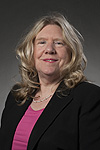 |
|
Vicky White
|
In a laboratory of our size, there is so much going on that there are bound to be a few things that don't go as planned. As COO, I learn about every time someone gets hurt, some piece of property is lost, a notable operational incident happens, or a safety or security incident occurs. I also hear about projects that aren't meeting their goals, travelers who are in difficulty, people who disregard the rules and even visitors who arrive without the necessary pre-arrangements.
I've learned that, in almost all cases, the people and organizations of the lab react quickly and appropriately to "off-normal" situations, getting to the bottom of what went wrong and fixing it. People in a division or section of the lab quickly and willingly go to help in an investigation or offer expertise. That is just how we should work, together as one lab!
Safety is a big area of concern when things don't go as planned, but not the only one — there are also incidents related to legal, finance, quality, security, accelerators, detectors and computing.
Over the past five months, we have initiated six in-depth investigations in several areas to get to the bottom of serious "off-normal" situations. As more people become familiar with, and trained in, the techniques of human performance improvement, we do a better job of viewing these events as part of a bigger picture. We ask ourselves questions about what factors led to the situation, including culture, habits and management behaviors. Most importantly, we look at where such factors might lead to other types of events with the goal of preventing or lessening the consequence of these "off-normal" events.
As COO I see clearly that the strong lab ES&H program, led by Martha Michels and the ESH&Q section, is also staffed and supported by people from all over the lab. The many ES&H subcommittees of the lab continually carry out essential explorations and oversight, and each reports regularly on their work at the monthly FESHCOM meetings. It's encouraging to see everyone from across the lab pooling their expertise, experience and energy in that way.
Several other working groups have recently been launched that focus on improving other parts of the lab, including project management, science strategy, and the time and labor system. More groups will be launched soon.
I want to thank all of the people across the lab who participate in the many subcommittees, taskforces, working groups, panels, reviews and audits. This is work they take on in addition to their normal daily responsibilities.
|
Warmth on a winter landscape
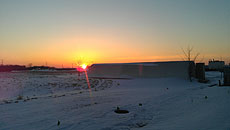 |
| The sun slips beneath the horizon on Thursday. This photo was taken from the back of the DZero Outback Building. The big tornado shelter is visible on the right. Photo: O'Sheg Oshinowo, PPD |
|
To scientists in pursuit, a bit of matter is no small matter
From The New York Times, March 4, 2014
A description of "Particle Fever" — Mark Levinson's mind-blowing new documentary — must grapple with some issues of scale. This is a modest, compact movie about the largest imaginable subject: the structure of the cosmos.
It tells the story of an enormous project, involving decades of labor, hundreds of millions of dollars and miles of Swiss real estate, devoted to finding something almost immeasurably small: the Higgs boson, a subatomic morsel believed by physicists to hold the key to understanding the universe. (It's sometimes called "the God particle.") The experience of watching the film can be vertiginous: You toggle between the tiny and the infinite, between eternity and the real time of the recent past.
The Higgs particle is named for Peter Higgs, one of the physicists who first posited its existence in 1964. (He shared the Nobel Prize in Physics last year.) It has a central role in what physicists call the Standard Model, a comprehensive account of, well, just about everything.
Read more
|
|